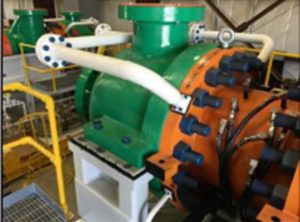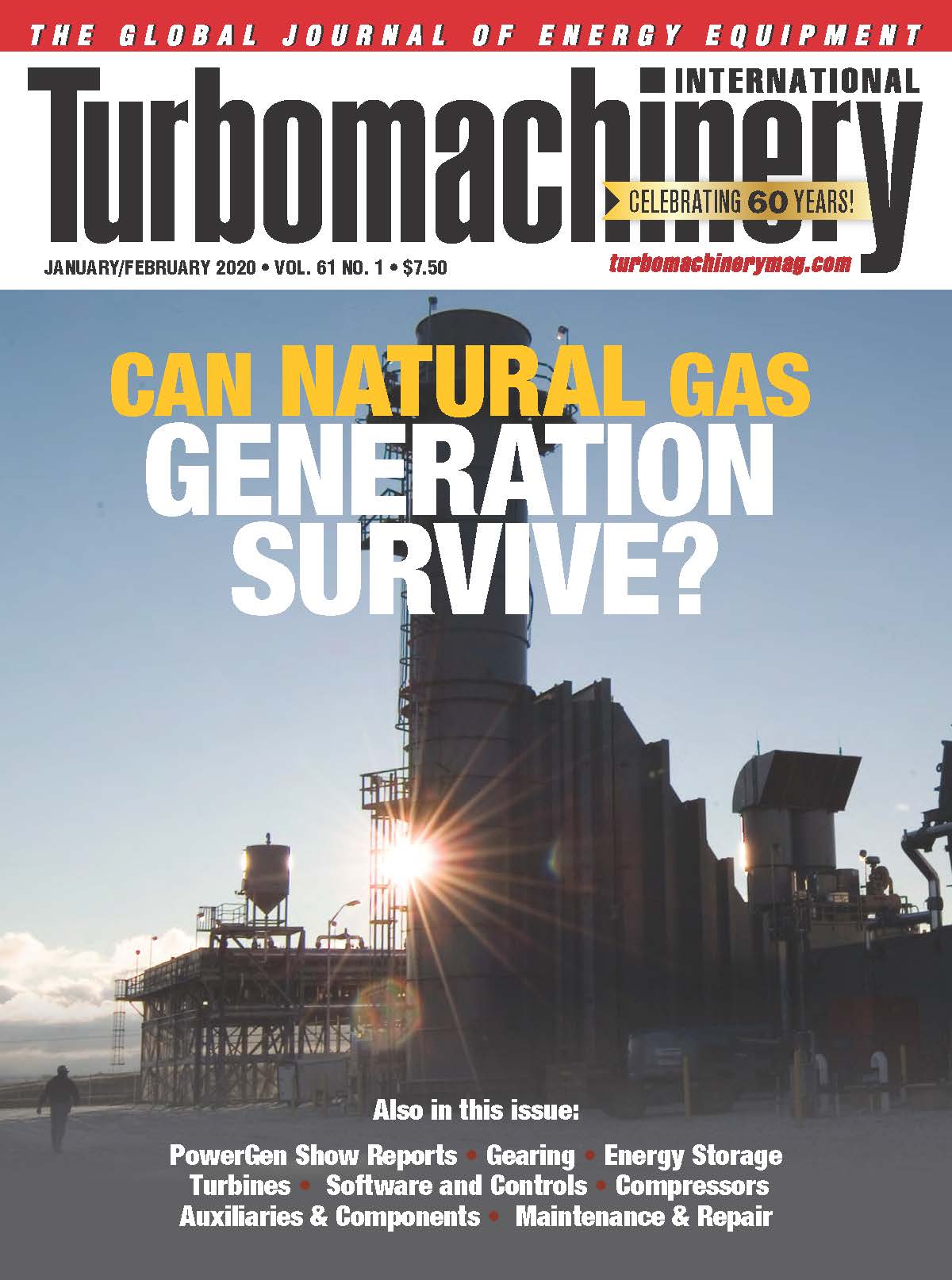Protecting new equipment before installing offshore

Picture shows coated fasteners and marine paint systems. Also shown are temporarily applied coatings on machined
surfaces[/caption]
Off shore applications command some of the most significant efforts in protection of equipment against damage and degradation prior to being put into final operation. Preservation, connection covers, purging, and other means may need to be employed due to significant construction durations for shipboard applications.
This article contains excerpts from the paper, "Successful application of nitrogen turboexpander compressors to floating and land-based LNG facilities," by Robert E Benton and Ethan D Eiswerth of Air Products at the 2018 Turbomachinery & Pump Symposia.
Because some equipment may need to be installed a year or more in advance of sail away, the equipment must be suitably protected to prevent deterioration and ensure top performance. Protective coatings and corrosion resistant material selections must be selected for the application to ensure the equipment is protected from degradation.
Austenitic 316 stainless steel is a common construction material that when combined with coatings of paint or rust preventive mastic forms an excellent corrosion resistant system. High strength alloy steel bolting can be coated with PTFE corrosion resistant layers that provide protection from the elements and sea salt. For machined surfaces that cannot be painted or clad, suitable marine grade rust preventive coatings should be applied to protect the surfaces from corrosion. Marine grade petrolatum tape can also be installed to protect against moderate mechanical damage from dropped tools or fasteners.
Purged shipping/storage containers should be considered for high dollar items that can be shipped and stored on that manner. For offshore applications, more significant packaging efforts, such as packaging to MIL-STD-2073 methods 30 or higher should be considered. Below are pictures showing a compander skid with method 50 (formerly MIL-P-116J Method II) preservation being employed.
Protective coatings of various types are useful in equipment preservation/protection. The types of coatings employed can include the following: a. Temporary coating protection. These can include spray or brush on coatings that have varying levels of protection and efforts of removal. b. Special coatings on fasteners. The use of fastener coatings can affect friction factors so care must be taken to adjust torque values on torqued fasteners. c. Paint systems. These systems should be designed for marine environments and applied properly. Proper attention to recommended DFT’s and dry times are critical to paint system durability. Touch up painting/coating on site may provide an economical means to ensuring prolonged equipment protection. The OEM and EPC should coordinate such efforts. d. Corrosion-resistant materials. Extensive use of these materials is common in offshore environments and ease the need for preservation methods on all equipment.
- Cladding and weld overlays. Use of these on surfaces may be appropriate for certain applications. f. Petrolatum tape and mastics. These can be applied to provide both corrosion resistance and some moderate level of protection from mechanical damage. If materials of construction are altered for a first offshore application, it is important to pay attention to introducing additional possibilities of galvanic corrosion due to dissimilar material contact.
Purging and desiccant application are common approaches to prevent moisture accumulation in equipment internals and are also useful to protect offshore equipment. Appropriate periodic inspection protocols for purges and desiccant applications are required to ensure they are providing adequate protection.
The desiccant may require frequent replacement/refreshing in a high humidity environment such as an offshore location. One of the best ways to ensure that critical machinery does not get damaged during construction and pre-mechanical completion activities is to simply keep the most critical hardware out of harms way.
A mock-up may be considered where high dollar value machinery cartridges can be shipped and stored separate from the equipment package/skid. Compander plug-in units, or mechanical center sections (MCS), are a type of rotating machinery that can benefit from the use of a mockup during shipment and skid installation. This approach permits the critical machinery to be stored in a clean, preserved state for as long as possible before the required installation date, which minimizes the risk of degradation. This picture captures several preservation methods employed on offshore applications. Coated fasteners and marine paint systems are displayed. Also shown are temporarily applied coatings on machined surfaces.
Finally, the large orange flanged center section is a compander MCS mock-up, which also replicates instrument connection points and is designed to allow low pressure blowdowns of piping prior to installation of the MCS. The mockup allows all fit up of piping and instrumentation to be conducted in the factory and field without the need to install the actual equipment. These pictures show the completed MCS mounted into the base of a purged shipping container (far left) and the fully assembled container, complete with inspection window (to permit visual inspection of the machinery condition), orange document container and onboard N2 blanket system. With the use of a mockup, the contract MCS’s can stay protected until they are needed for final installation prior to commissioning. The containers also provide convenient long-term storage of the spare MCS and simplify transport for refurbishment.
